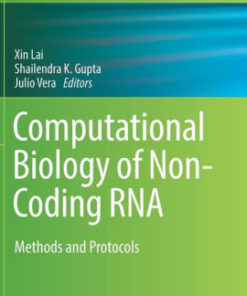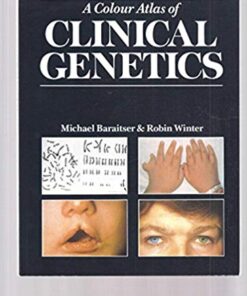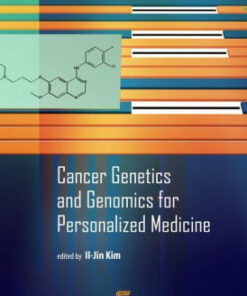(PDF) Reverse Genetics of RNA Viruses by Anne Bridgen
$18.00
Download instantly Reverse Genetics of RNA Viruses – Applications and Perspectives by Anne Bridgen. It is ebook in PDF format.
ISBN-10: 0470979658 ISBN-13: 9780470979655
Preview
This is the PDF eBook version for Reverse Genetics of RNA Viruses – Applications and Perspectives by Anne Bridgen
Table of Contents
List of contributors xi
Acknowledgements xiii
1 Introduction 1
Anne Bridgen
1.1 Background 1
1.2 Reverse genetics for different classes of genome 2
1.3 Methodology 5
1.4 Difficulties in establishing a reverse genetics system 11
1.5 Recent developments 13
1.6 Are there any boundaries for conducting reverse genetics? 13
References 15
Part I Positive sense RNA viruses 25
2 Coronavirus reverse genetics 27
Maria Armesto, Kirsten Bentley, Erica Bickerton, Sarah Keep and Paul Britton
2.1 The Coronavirinae 27
2.2 Infectious bronchitis 28
2.3 Coronavirus genome organisation 29
2.4 The coronavirus replication cycle 30
2.5 Development of reverse genetics system for coronaviruses including IBV 33
2.6 Reverse genetics system for IBV 37
2.7 Reverse genetics systems for the modification of coronavirus genomes 40
2.8 Using coronavirus reverse genetics systems for gene delivery 49
Acknowledgements 51
References 51
3 Reverse genetic tools to study hepatitis C virus 64
Alexander Ploss
3.1 Introduction: hepatitis C 64
3.2 Hepatitis C virus 65
3.3 Construction of infectious clones for hepatitis C virus 68
3.4 Study of HCV RNA replication in cell culture systems 68
3.5 Use of HCV replicons to study viral replication 70
3.6 Utility of replicons for drug screening 71
3.7 Development of the infectious cell culture systems for HCV 71
3.8 Construction of intergenotypic viral chimeras 72
3.9 Non-JFH1 derived genomes 74
3.10 Cell lines that support HCV replication 74
3.11 Study of HCV in physiologically more relevant cell culture systems 75
3.12 Animal models for HCV infection 76
3.13 Reverse genetics of clinically relevant HCV genotypes in vivo 77
3.14 Conclusion 78
Acknowledgments 78
References 78
4 Calicivirus reverse genetics 91
Ian Goodfellow
4.1 Introduction 91
4.2 Feline calicivirus 93
4.3 Murine norovirus 97
4.4 Porcine enteric calicivirus 103
4.5 Rabbit haemorrhagic disease virus 104
4.6 Human norovirus 104
4.7 Conclusion 106
Acknowledgements 107
References 107
Part II Negative sense RNA viruses 113
5 Reverse genetics of rhabdoviruses 115
Alexander Ghanem and Karl-Klaus Conzelmann
5.1 Introduction: the Rhabdoviridae family 115
5.2 Rhabdovirus reverse genetics 121
5.3 Applications and examples 132
5.4 Conclusion 137
Acknowledgements 137
References 137
6 Modification of measles virus and application to pathogenesis studies 150
Linda J. Rennick and W. Paul Duprex
6.1 Introduction 150
6.2 Measles: the disease 150
6.3 Measles: the infectious agent 151
6.4 RNA synthesis: a tail of two processes 154
6.5 Transcription: starting, stopping, dropping off or starting again 154
6.6 From transcription to replication: the elusive switch 155
6.7 Getting in and getting out 157
6.8 Measles virus: reverse genetics 158
6.9 Future perspectives 181
Acknowledgements 182
References 182
7 Bunyavirus reverse genetics and applications to studying interactions with host cells 200
Richard M. Elliott
7.1 Introduction: the family Bunyaviridae 200
7.2 Bunyavirus replication 201
7.3 History of bunyavirus reverse genetics 203
7.4 Minigenome systems for bunyaviruses 205
7.5 Virus-like particle production 207
7.6 Rescue systems for bunyaviruses 208
7.7 Application of reverse genetics to study bunyavirus replication 208
7.8 Outlook 215
References 216
8 Using reverse genetics to improve influenza vaccines 224
Ruth A. Elderfield, Lorian C.S. Hartgroves and Wendy S. Barclay
8.1 Introduction 224
8.2 Influenza vaccines 227
8.3 The use of reverse genetics to generate recombinant influenza A, B and C viruses 229
8.4 Using reverse genetics technology for generation of pandemic virus vaccine 232
8.5 Other strategies for generating live attenuated vaccines based on viruses engineered by reverse genetics 235
8.6 Strategies to improve the safety or yield of influenza vaccines 238
8.7 Improvements to the PR8 high growth strain 239
8.8 Improving the immunogenicity by engineering recombinant viruses that express cytokine genes 240
8.9 Novel species-specific attenuation that takes advantage of microRNAs 240
8.10 Conclusion 241
References 241
Part III Double-stranded RNA viruses 251
9 Bluetongue virus reverse genetics 253
Mark Boyce
9.1 Introduction to Bluetongue virus 253
9.2 Bluetongue virus replication 254
9.3 Reverse genetics 260
9.4 Uses of reverse genetics in orbivirus research 271
9.5 Future perspectives 278
10 Genetic modification in mammalian orthoreoviruses 289
Sanne K. van den Hengel, Iris J.C. Dautzenberg, Diana J.M. van den Wollenberg, Peter A.E. Sillevis Smitt and Rob C. Hoeben
10.1 Introduction 289
10.2 Forward-genetics in orthoreoviruses 296
10.3 Reovirus/cell interactions 297
10.4 Reverse-genetics in orthoreoviruses 301
10.5 Reovirus as an oncolytic agent 306
10.6 Conclusion 308
References 309
Part IV Recent and future developments 319
11 Reverse genetics and quasispecies 321
Antonio V. Border´ýa and Marco Vignuzzi
11.1 Definition of quasispecies and evidence 321
11.2 Reverse genetics and RNA virus population heterogeneity: consensus is always a compromise 328
11.3 Examples of the use of the theory to disable or manipulate the quasispecies under controlled environments 333
11.4 Future prospects of virus population genetics and reverse genetics 339
11.5 Conclusion 341
References 342
12 Summary and perspectives 350
Anne Bridgen
12.1 Introduction 350
12.2 Analysis of the role of specific non-coding sequence motifs involved in replication, transcription, polyadenylation and packaging 351
12.3 Analysis of the roles of viral proteins 352
12.4 Analysis of virus–host interactions at a global level 353
12.5 Understanding the basis of pathogenicity 354
12.6 Real-time virus imaging in vitro and in vivo 355
12.7 Structure-function analysis of viruses and viral domains 356
12.8 Vaccine generation 357
12.9 Drug development 359
12.10 Gene delivery and knock-out in plant cells including virus-induced gene silencing (VIGS) 361
12.11 Gene delivery in arthropod and mammalian cells 362
12.12 Development of oncolytic virus and adaptation to this purpose 363
12.13 Personal highlights and future directions 364
References 366
Index 375




